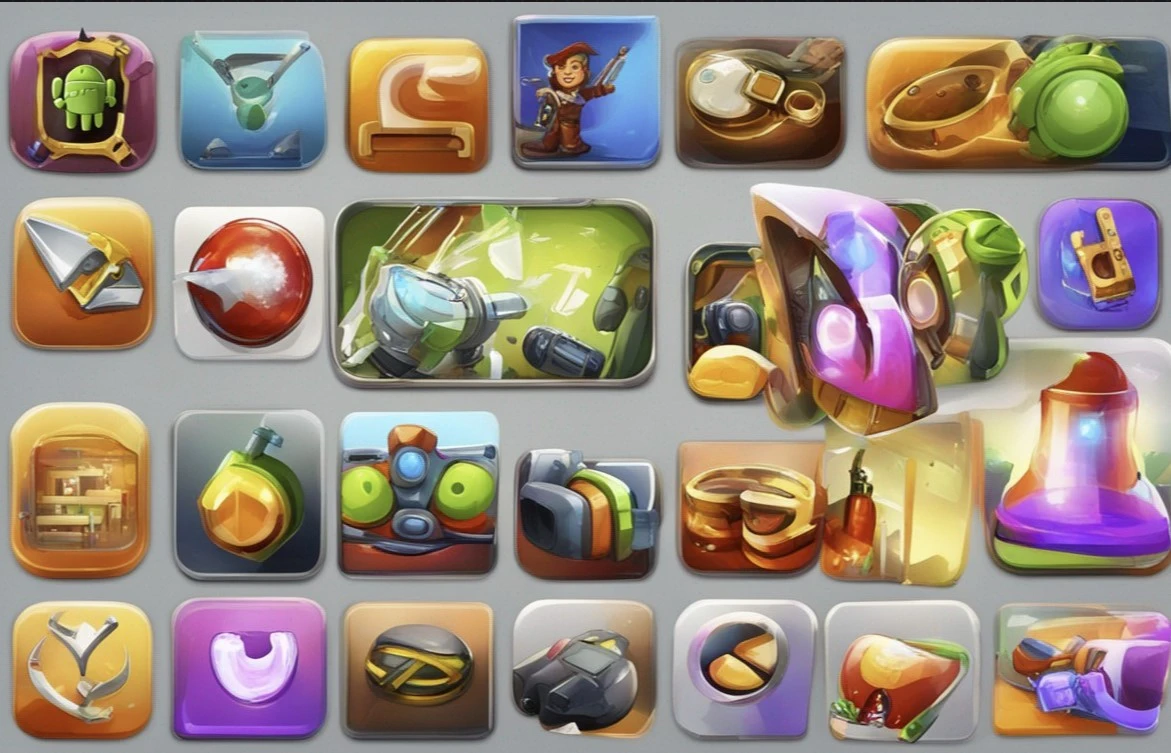You don’t need to buy a telescope or climb onto your rooftop to admire the night sky. A smartphone and an installed app are sufficient. Let’s talk about one of these apps.
SkySafari
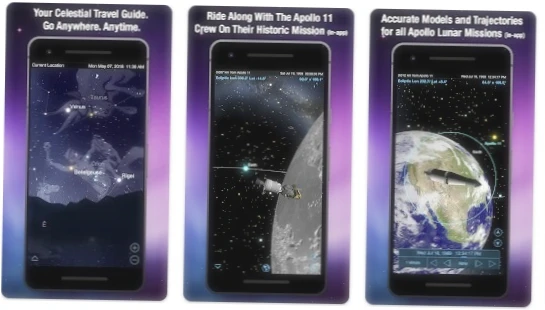
SkySafari allows you to study celestial objects from any point on Earth in augmented reality mode. Simply point your smartphone at a certain part of the sky, and you’ll see a map of that portion of space.
In fact, you can point it at anything: SkySafari relies solely on coordinates and gyroscope data. Thus, you can explore the sky and read encyclopedic articles about celestial objects even from the comfort of your home, as long as there’s an internet connection.
The app’s traditional map of celestial bodies’ positions is accompanied by photos from the Hubble Telescope, star information from the Hubble Guide Star catalog, and its own references. With SkySafari’s basic version, you can learn about more than 120,000 stars and 222 clusters, nebulae, and galaxies. The full database contains information about 100 million stars, 3 million galaxies, and 750,000 objects in the Solar System.
Price: Free
NASA App
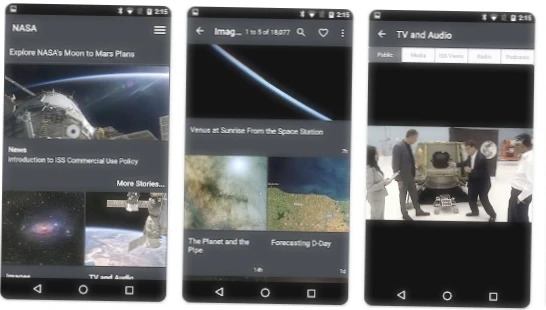
In this app, you can find information, photos, and documents about all NASA missions. The data is updated daily and weekly, with news and collections of employee posts. You can also watch live broadcasts from NASA Television on your smartphone screen and track the trajectories of agency satellites passing over.
Price: Free
ISS Detector
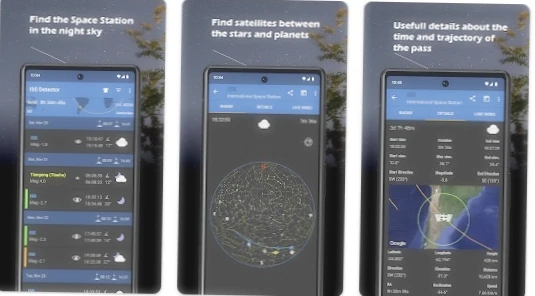
Let’s remember that the International Space Station is a joint project of many countries. Perhaps that’s why it deserves its own app, which notifies users of the upcoming appearance of the station above them (5 minutes before the event). If you’re lucky, you can see the ISS with the naked or aided eye.
The app also provides similar information about the Chinese space station “Tiangong,” the Hubble Telescope, passing satellites, and comets.
Price: Free
Solar Walk

Solar Walk is a three-dimensional model of the Solar System. The database includes all major planets and their satellites, as well as stars, comets, and other celestial objects.
By adjusting the scale, you can catch a glimpse of the Milky Way, albeit in a general sense. Additionally, you can view a selection of educational films about the structure of our star system.
Price: Free
Stellarium Mobile

The mobile version of the popular open-source computer program. It boasts an extensive database of stars and quality constellation illustrations. The app lets you search for and identify favorite planets and constellations, track moving satellites, view information about celestial bodies, including myths and legends from various cultures.
As you zoom in, the app loads images of nebulae and galaxies in high resolution.
Price: Free
Planet’s Position

As the name suggests, this app is designed to calculate the positions of planets in the night sky. You need to input your own coordinates, and you can accurately determine the location of the objects you’re interested in.
It also allows you to set the observation time: the Planet’s Position database contains information about the positions of planets since 1900. With the help of the built-in calendar, it’s easy to determine the timing of eclipses (lunar and solar).
Price: Free
Star Walk 2
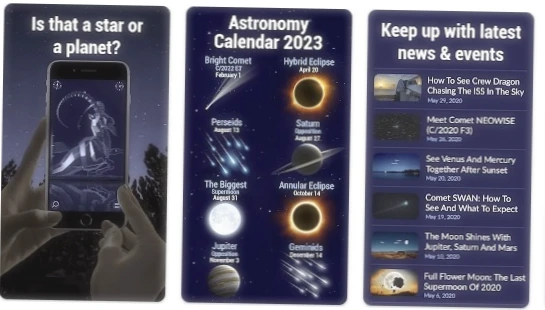
This app is designed for a 360-degree view of space. It can display planets, their satellites, stars, constellations, and nebulae. Similar to the previous application, each object in Star Walk 2 is accompanied by its own card with a description. There’s an interesting feature of separately viewing the daytime and nighttime sky.
Price: Free
Sky Map
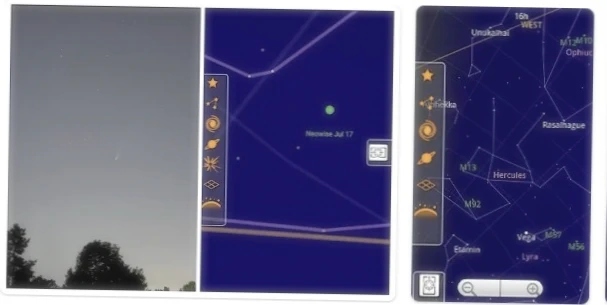
The maps use a compass and GPS data for precise determination of celestial object locations. You can use Sky Map in several ways. Firstly, simply look through your smartphone at the sky (or at the ground to see what’s happening on the other hemisphere) to see the current view above the clouds.
Secondly, select the desired object and then, using the app’s prompts, point your device in the right direction. And the “Time Travel” function will tell you where the selected object was or will be at a certain time.
Price: Free
SkEye Astronomy

This app is for true astronomers. At least, its sole function is useful only for those with a telescope. By synchronizing your smartphone with the telescope, you can use prompts to align the telescope to view the desired object.
The SkEye Astronomy database includes over 180 bright objects: planets of the Solar System, celestial bodies from the Messier catalog. Additionally, there’s a Time Machine function that allows you to plan observations of nightly meteor showers.
Price: Free
Star Tracker
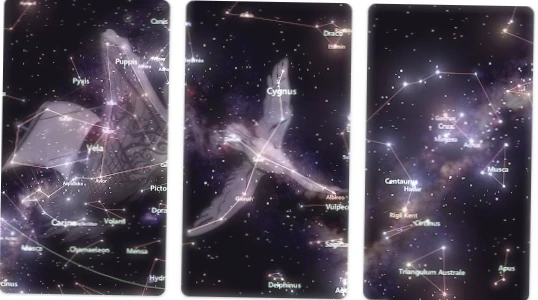
This app helps you view 88 constellations and more than 8,000 objects, including the Sun, Moon, and planets, in real-time. The app uses a 3D compass in augmented reality (AR) mode, indicating the position of the desired celestial bodies. Star Tracker provides graphical representations of the 12 zodiac signs for constellations.
All necessary data for operation are stored offline in the device’s memory.
Price: Free
Sky Tonight
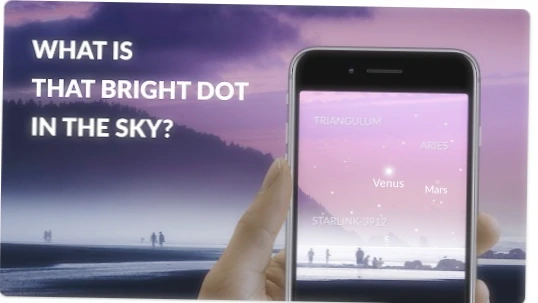
An augmented reality app that helps you locate and identify objects in the night sky. It features beautifully illustrated constellation maps. Sky Tonight displays object trajectories in the sky relative to the observer. You can view the location for different points in time.
Additionally, there’s a search system that allows you to quickly find interesting objects and related celestial bodies, events, and articles. The app lets you use a calendar of celestial events, including lunar phases, meteor showers, eclipses, and more.
Price: Free
Conclusion
In a world where technology constantly connects us, these astronomy apps bridge the gap between our everyday lives and the vast expanse of the universe. With just a smartphone and a touch, we can peer into the cosmos, exploring stars, planets, and celestial phenomena that have captivated human imagination for millennia.
Whether you’re a casual stargazer or a dedicated astronomer, these apps bring the beauty and mystery of the night sky right to your fingertips.
So, embrace the wonders above, and embark on your own celestial journey – a journey that reminds us of our place in the cosmos and the endless mysteries waiting to be discovered.

